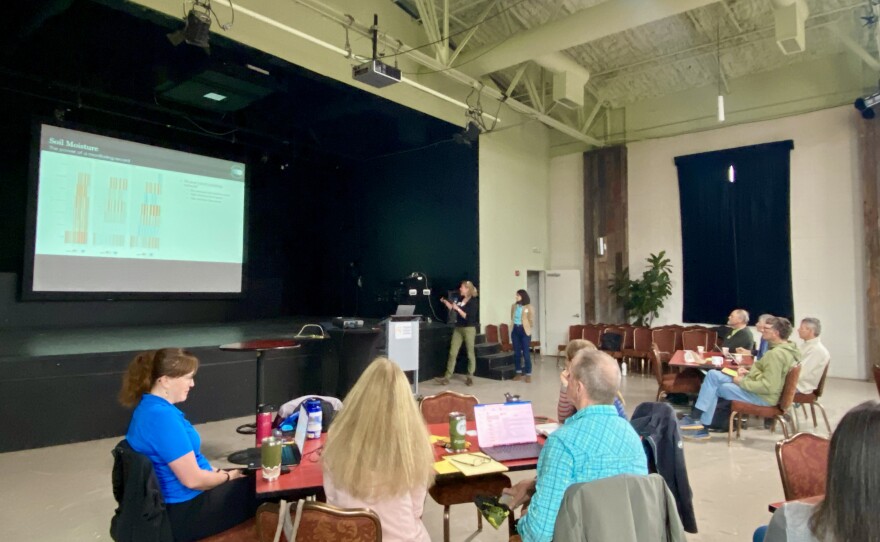Last week’s watershed summit, hosted by the Ruedi Water and Power Authority, involved talks on factors that can affect local watersheds or runoff expectations. KDNK’s Hattison Rensberry attended the meeting to learn more about those factors. First up was soil moisture, presented by representatives of the Aspen Global Change Institute.
" We have about a 10-year monitoring time scale at our longest site. And something I think that jumps off the page is the deep cyclicity of our soil moisture here. And that makes sense, right? We are a, a snow pack dominated system, and so we see drying cycles in the fall and wetting cycles in the spring, but pretty consistently across the board we have a cyclical nature to our data.
So moisture is this memory creator. It's created a memory across seasons, and it's creating a memory cause of that winter to spring relationship across years. And it's really important. Remember, a single is going save us in here, or even a single big snowstorm is not maybe going to be enough.
So it's this memory of what's happened in our water cycle. And so what we see for 2023 across watue sites is, we are looking better than the 2021 water year. That's good news. We're wetter than that, but we're still a little bit below average and we're drier than some of recent year memories like say, 2018. So not as bad as it could be.
Maybe not as wet as it could be either."
As rain fell outside Carbondale’s Third Street Center, Kevin Warner from the U-S Forest Service discussed the national wildfire crisis, and how forest fires impact the Roaring Fork watershed.
"When we think about the biggest threat to Roaring Fork Valley Watershed, so it's, it's wildfire. Why are forests important to our watershed? So the watershed itself is just about a million acres. 75% of that is public land, and most of what you see there is forest, whether it's BLM, whether it's, uh, National Forest.
I'm sure we've got a lot of, what we like to call rock and icing those kinds of things up high as well. A lot of that is, is forest upbeat. Forest and watersheds. They absorb the snow, the rain comes in, they store it, they hold onto it, the the soils filter it, and then it comes out in the streams. It comes out in the groundwater and we all utilize it.
Plus, so is, uh, half of the rest of the Western United States, we have local control over what we do in our love interface. We have personal control over what we do on our private property to help that out."
Some strategies that Warner says are helping prevent wildfires include: Wildland Urban Interface property assessments, prescribed burns, and utilizing masticators or chainsaws to reduce overgrowth in forest areas.
Next, presenter Lindsay DeFrates of the Colorado River District gave some insight into predicted flows for 2023.
" So the interesting thing about this area, along with our southern system, Southwestern District, The water that falls of snow, and rain makes up about 70% of the natural flow of the Colorado River where it's measured in the year. So our snow has a huge amount of impact. I heard that the, the growing court provides 10% of that as well.
So just within this district with fewer people, we have a tremendous amount of impact and conversation just cause the water that falls within it. This is the Port River, the springs. Early we were very optimistic thinking that it was gonna be wow, whatever, around 90,000. But you can see that prediction of the peak has come down a little bit.
The most recent one, putting it right at about 8,000 CFS."
DeFrates then spoke about predictions for the Crystal River (which is tricky due to its undammed nature), mentioning that the observed runoff so far in the year is not matching up to predictions whatsoever in timing or amounts. She noted that situations like that can be tricky for water managers who are making the decisions on how much water to release and when.




